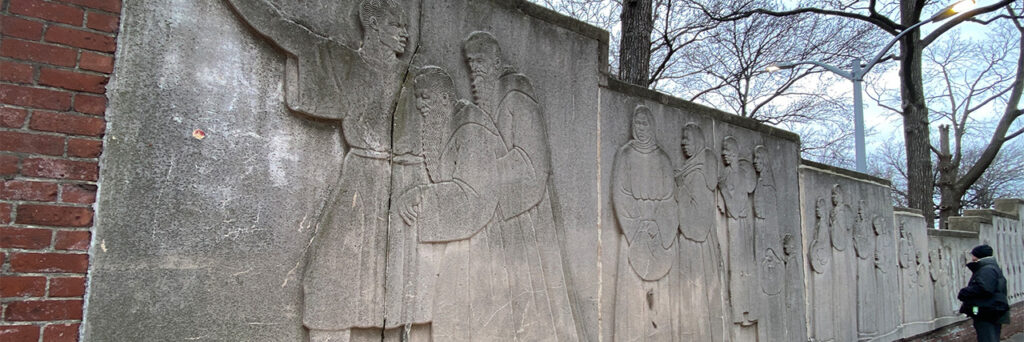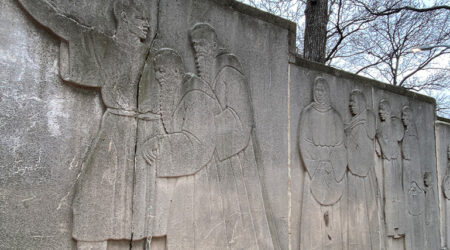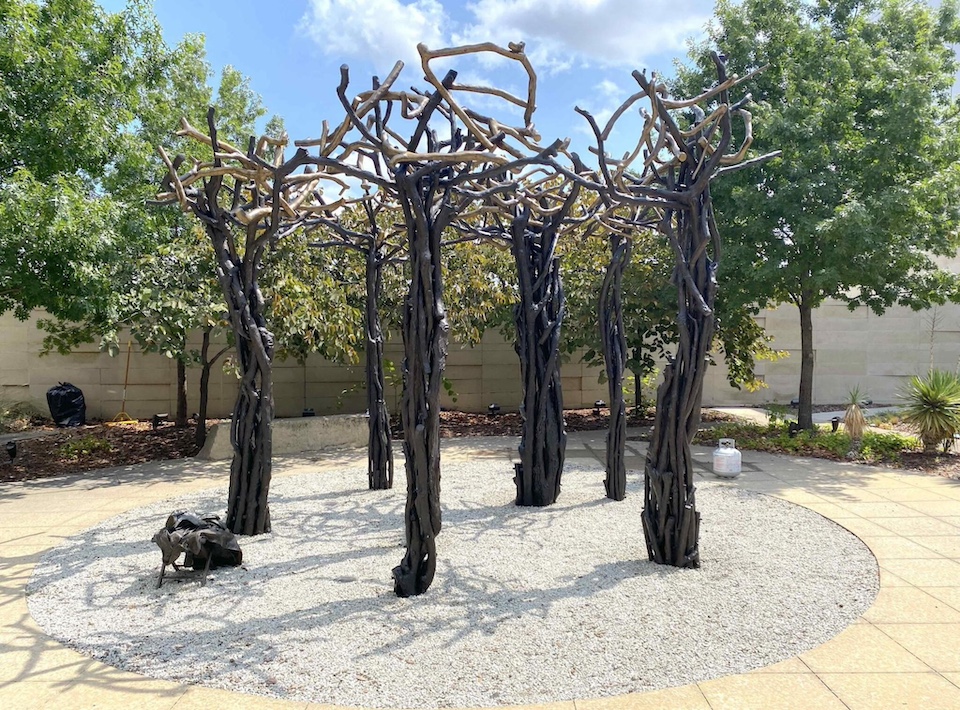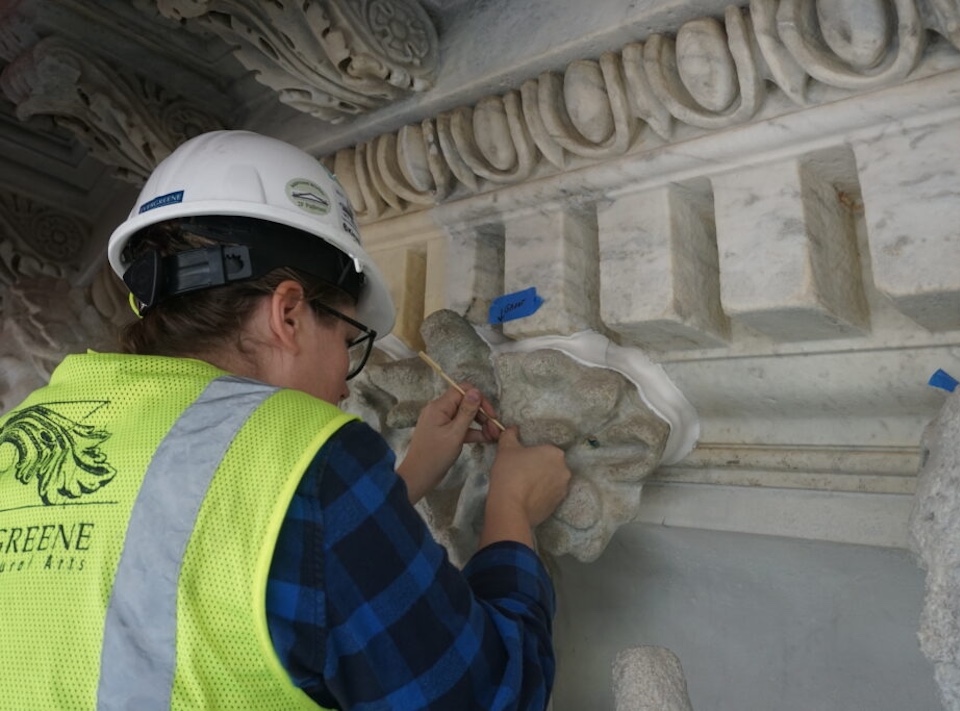The Exodus and Dance is a monumental, 8-foot by 80-foot frieze created by Richmond Barthé. It adorns Kingsborough Houses, a 16-acre public housing complex built in Brooklyn, New York in 1941. This significant piece of public art is currently in process of being restored at EverGreene’s conservation studio. Commonly referred to as “The Wall” by Kingsborough resident, the frieze is the largest piece of art created by Barthé, who is widely recognized for his work inspired by Christianity, Black history, African lore, theater, and dance.
The Story of the Frieze
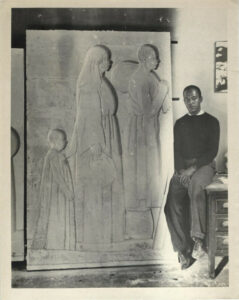
James Richmond Barthé based the right side of his design on the Pulitzer Prize-winning play Green Pastures by Marc Connelly, reflecting on Black southern rural religion in the 1930s. Art Deco and Black dancers from David Wendell Guion’s 1929 ballet, Shingandi, inspired the left side of the frieze.
During the Works Progress Administration era (1935–1943), sculptors were commissioned to create public art for the Harlem River House as part of the Federal Art Project. Pioneer John Louis Wilson Jr. was one of the first Black architects registered in New York State who designed the Harlem public housing building in 1936–1937. He personally selected Barthé to design the frieze for the rear wall of an amphitheater that was never constructed.
Exodus and Dance is Barthé’s largest work and his first relief. He completed the cast-stone frieze in 1939. The frieze remained in storage until it was eventually installed at Kingsborough Houses in Brooklyn in 1941, without Barthé’s prior knowledge or approval. As a federal employee, Barthé had no control over his work. While Kingsborough Houses were public federal housing, Black Americans were not the majority of residents, and Barthé believed the power and inspiration of his work would be lost. Kingsborough Houses was one of two public housing buildings designed to be desegregated in New York City before 1945. to this day, however, Exodus and Dance has been a landmark artwork for over eight decades enjoyed art enthusiasts and residents who have lived at Kingsborough Houses and its display of Black figures engaged in a dance continues to inspire the community around it.
Once restored, the renovated Kingsborough Housing plaza surrounding the restored frieze will be a revitalized, vibrant public space, fostering community gatherings, performances, and activities. Additional art installations, community murals, and interpretive signage will reflect the voices and narratives of the community and significance of the rich cultural heritage of Kingsborough Houses with its stories, memories, and dreams of the broader African-American community.
